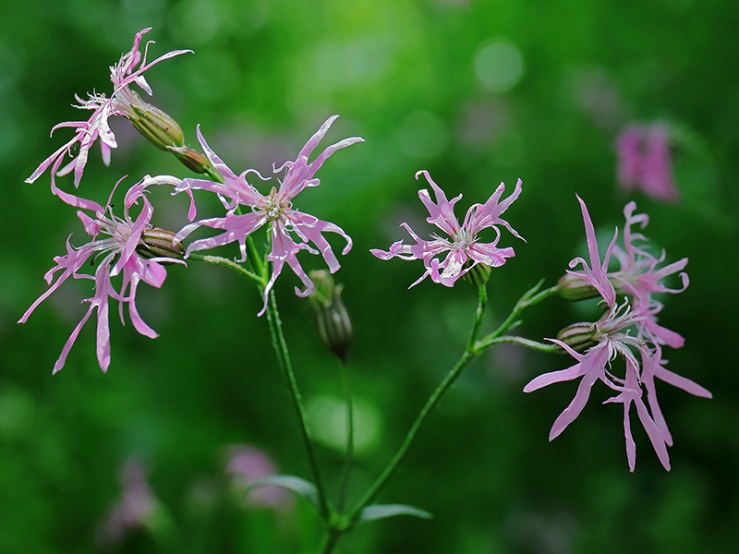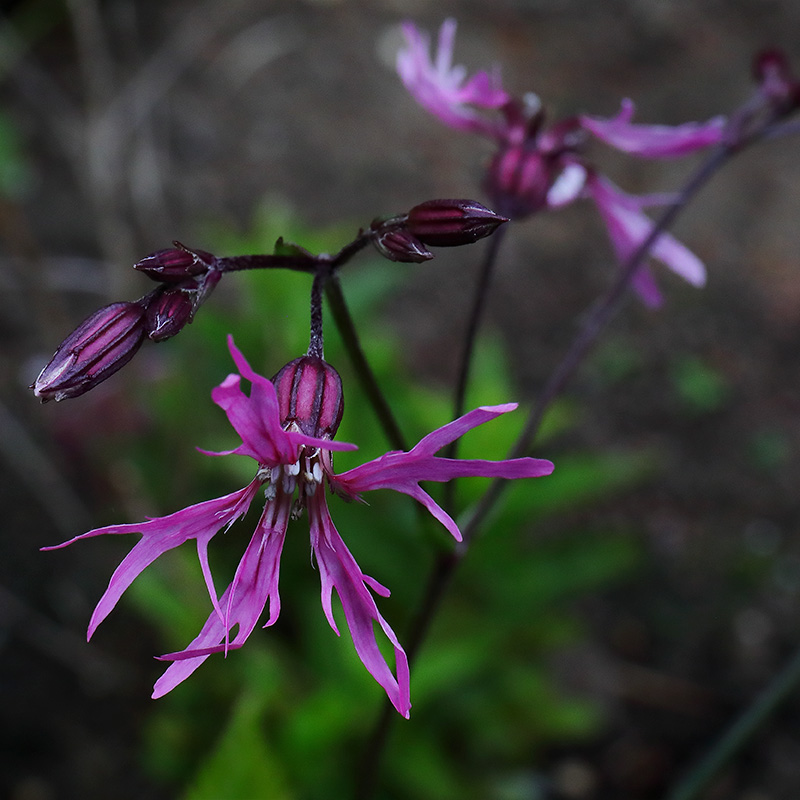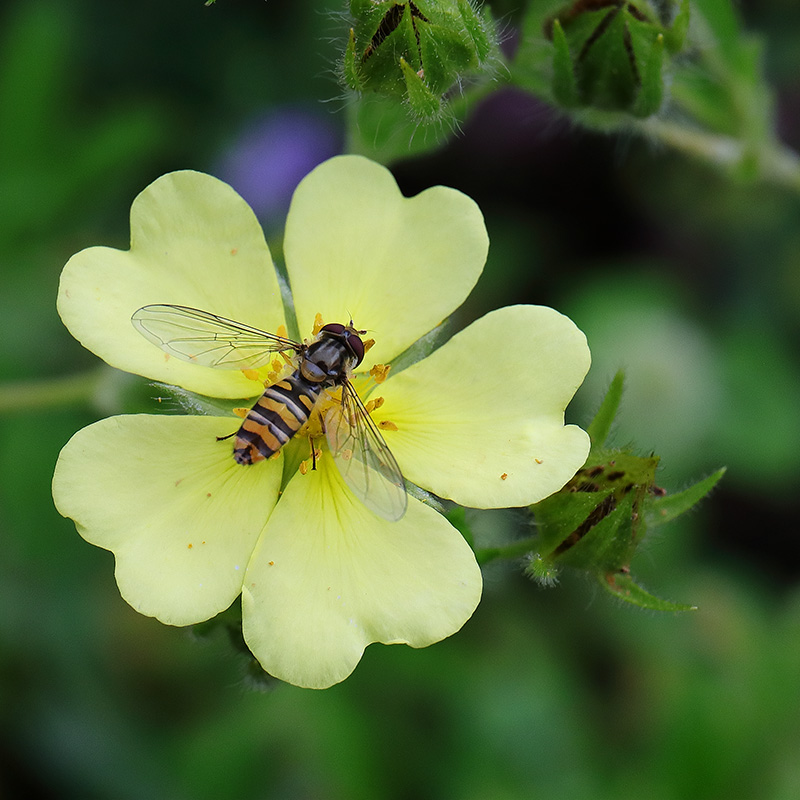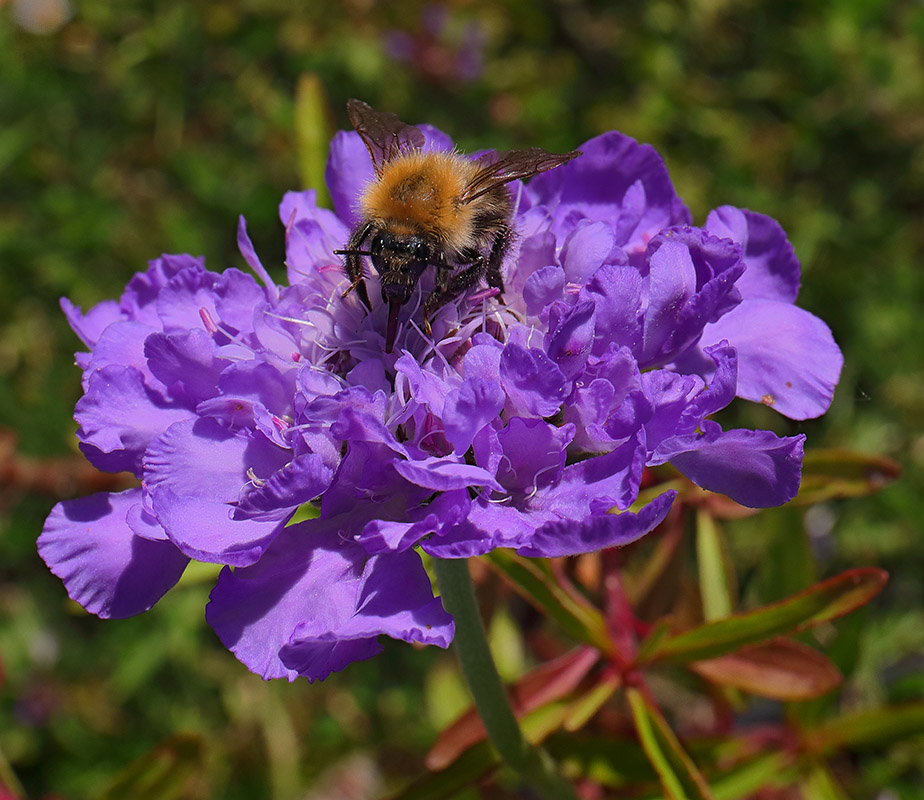NB: A note for WordPress Reader users – you need to click on the title of the post again to see the full photograph. (Otherwise you see just a tiny section!)
Ragged robin (Silene flos-cuculi, also known as Lychnis flos-cuculi) is a very pretty wildflower that is native to Europe and Asia. It grows in damp or marshy ground and was, in the past, a common sight around the UK. (I remember it growing in soggy ditches alongside country roads when I was much younger.) It has become significantly less common now, even rare, due to land development, especially the drainage of ground for agriculture and the loss of wetlands and wild ponds.
Fortunately, ragged robin is now grown as a garden plant. It’s a perennial which seeds itself around very readily in moist and sunny sites. Gardeners can choose cultivars in deep pink, pale pink or white. The pale flowers in the photograph below were growing in the wet ground alongside a large pond in a garden we visited. They were such a lovely sight that I wished I could grow them in my own much drier garden.
The desire to grow plants that like damp conditions led me to create a little ‘bog garden’ last year. That meant that I was able to plant the dark-flowered ragged robin that you can see in the top photo. (I was afraid that the huge increase in our winter rainfall might have drowned the plants in my bog garden, but everything in it is growing again and the ragged robin seems perfectly happy.)
The availability and growing popularity of wildflowers as garden plants helps not only their survival, but that of many insects too. Ragged robin is an excellent source of nectar for bees and butterflies and apparently attracts dragonflies too. I shall be on the lookout for those!



















